Author’s Note: The paper itself will be uploaded soon.
Here is the talk that I presented at GIFCon in May 2019 at the University of Glasgow.
Link to Soundcloud audio of the talk.

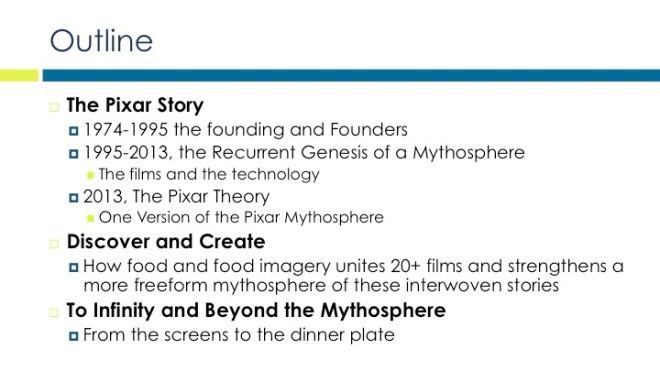

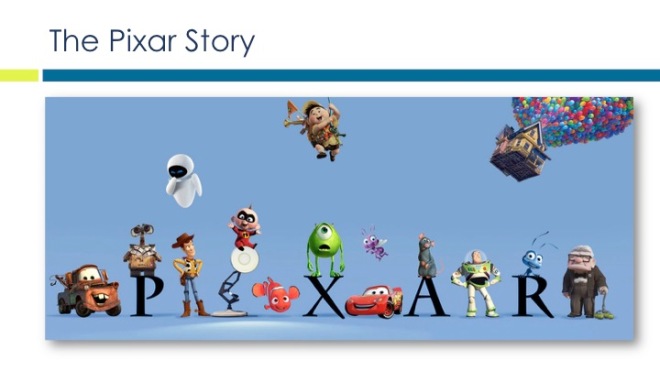
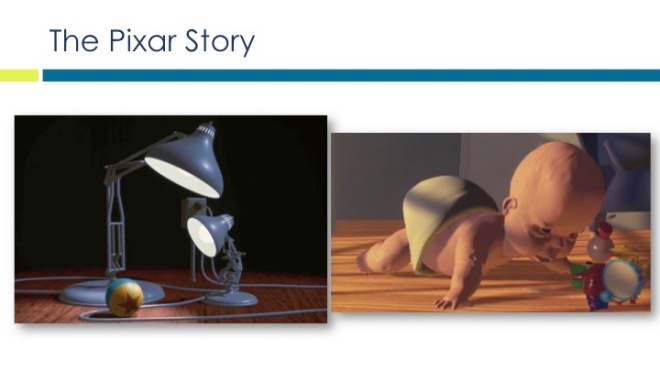



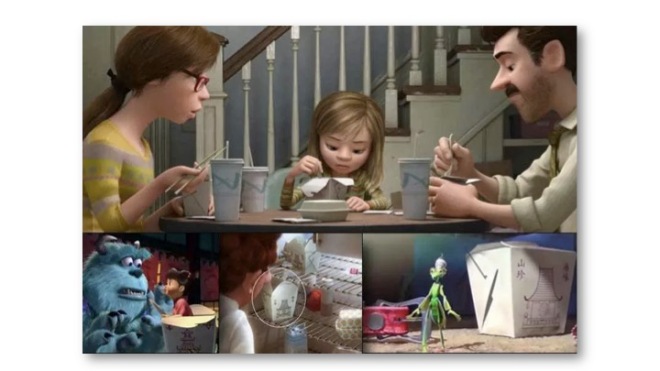
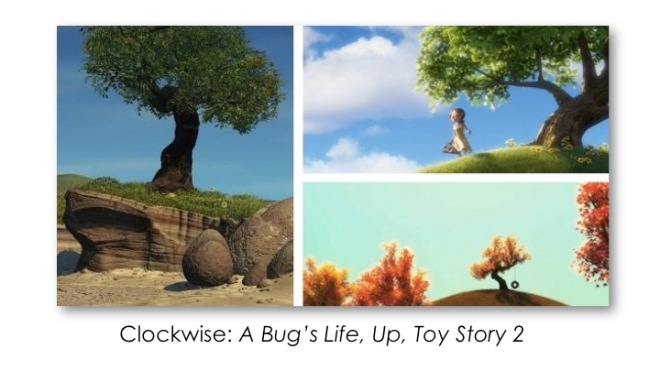
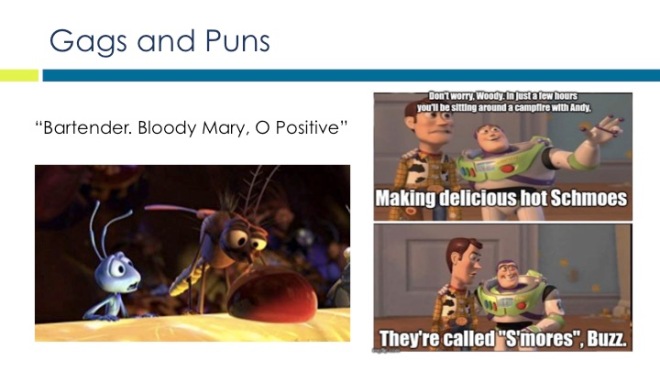
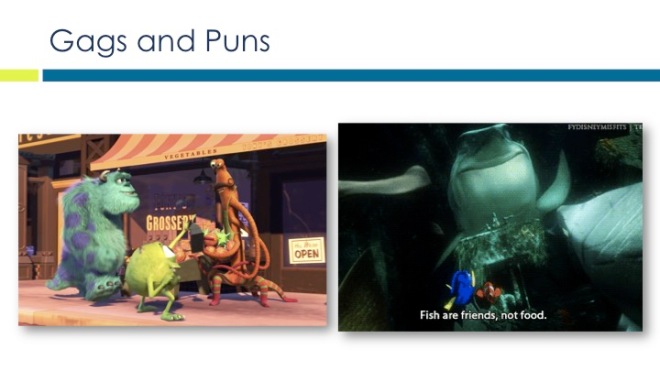
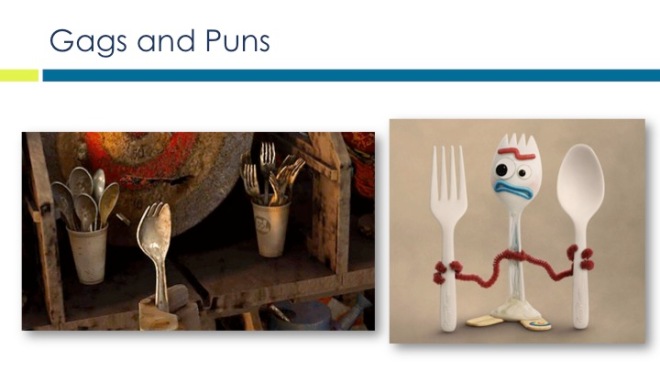
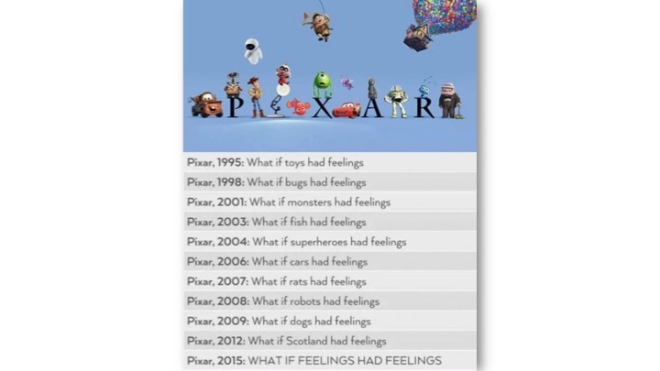
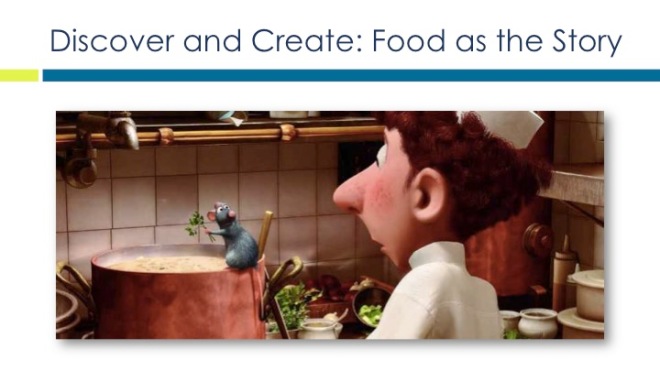

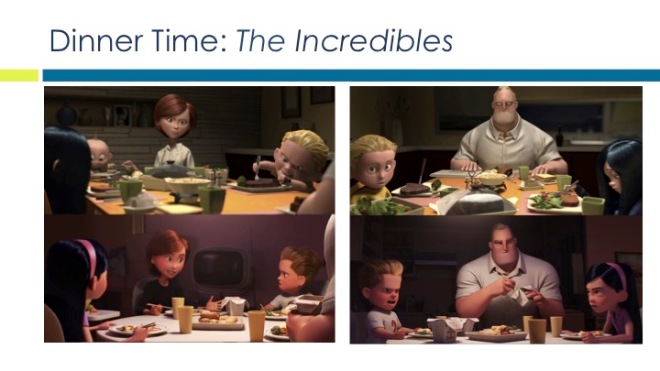
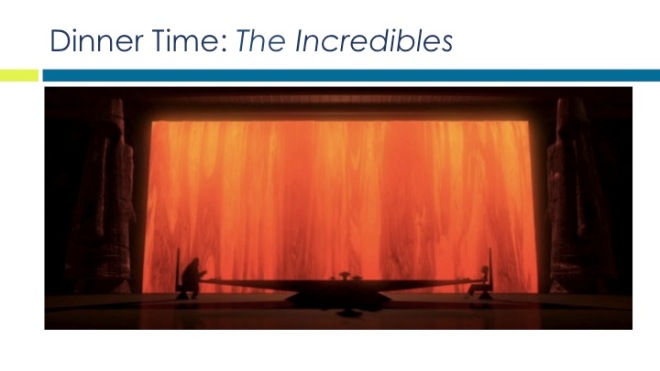
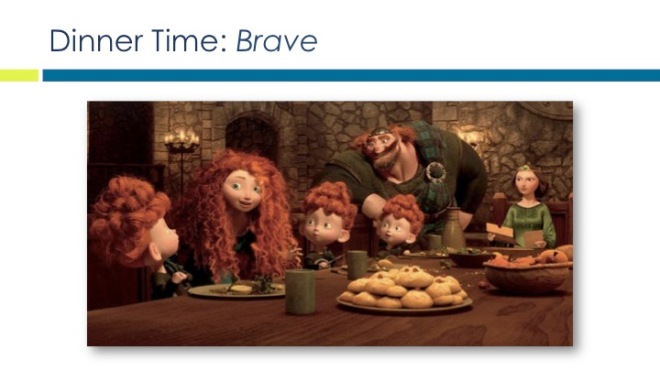

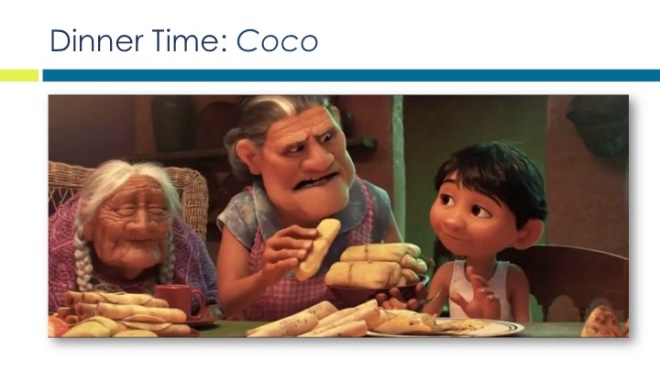

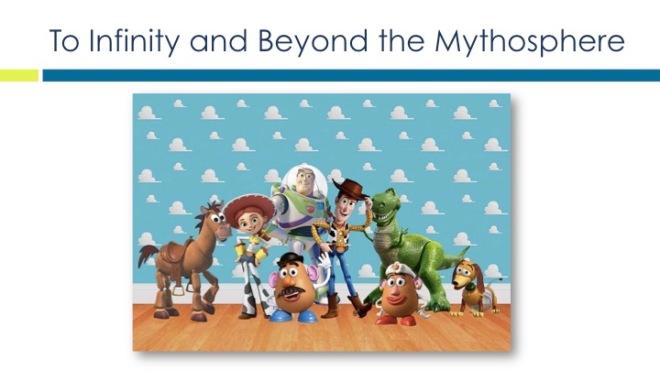
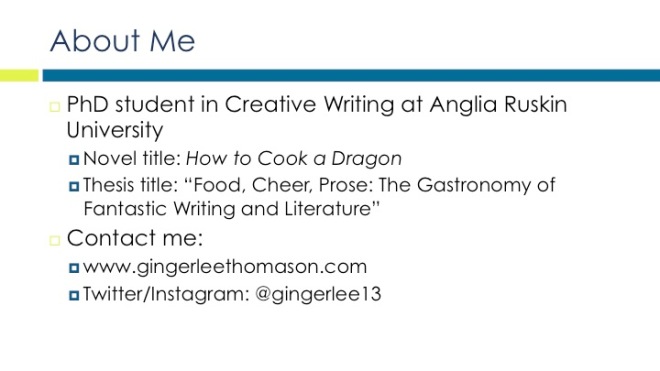
Author’s Note: The paper itself will be uploaded soon.
Here is the talk that I presented at GIFCon in May 2019 at the University of Glasgow.
Link to Soundcloud audio of the talk.
























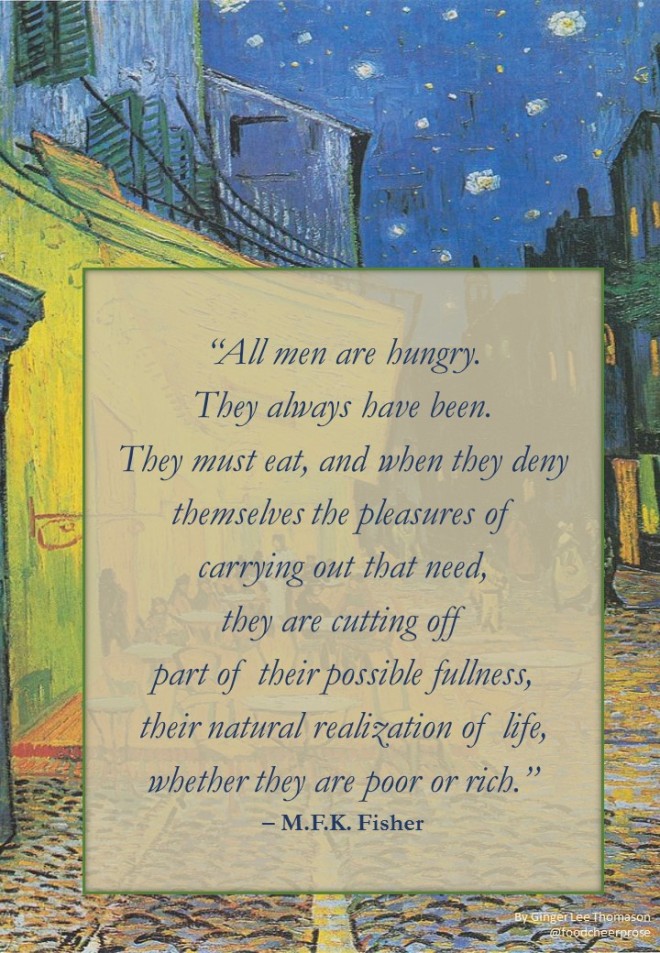
Several years ago, I wrote a scene for what I thought would be the first novel in a fantasy series. The main character sat down in a pub and ordered a “Kasiosi” meal, except the character himself is not Kasiosi, he is Lyssan. The meal was something along the lines of “smoked wild mountain boar with apples and roasted vegetables.” Why was this so significant? Because the character was telling me more about his backstory, or rather something in my writer-brain was telling me something had unexpectedly developed via that plate of food. I already knew that this character had a grim backstory. What was so significant about that meal was the dish was a memory of the “home” he had cultivated, even in the face of sexual slavery.
This was one of the first times when I realized that food had started to creep up as a reoccurring motif and theme in my writing. It would be another few years before I wrote my master’s craft thesis on the trope of the feast as part of introductory world-building and a character’s journey in fantasy and science fiction. I think this revelation came about because I had been undergoing my own food journey.
I have struggled with my weight since my teens. In 2010 I joined Weight Watchers and was successfully losing weight until I developed gallstones and everything was derailed once again. In 2012 my weight was on the forefront of my mind again when a medication change reduced my appetite, and also caused other unfortunate side effects. The weight loss was not worth the risk to my life. And after that I put on more weight with another medication change. But throughout all this I was slowly teaching myself how to cook. Often in an attempt to cook healthier meals, but mostly it was because I loved that I had a talent to cultivate and share with my family and friends. This learning to cook was accompanied by an increase in reading cookbooks and other food writing. In fact, one of the close reading essays I did during my MFA program was on a cookbook. I think that was a first for my teacher.
I ended up devouring (pun intended) texts by Michael Pollan, Bee Wilson, Julia Child, Mark Bittman, Ina Garten, Giada de Laurentiis, Nigella Lawson, and many others. This osmosis of food reading made its way into my writing, as any kind of reading eventually does. So much so that as I said before, I slowly became consciously aware that I was not only creating and consuming food on the plate, I was doing so on the page as well.
Fiction and eating are both acts of cultivation, creation, and consumption. Like other parts of fiction, food imagery is inherently interlinked with realism. It’s hard to have a story without food, even in short fiction, there’s usually a notion somewhere that eating is a part of humanity, even if it’s a throwaway line or a recognition of another of the classic five senses. Food is one of the few things that stimulates sight, sound, smell, touch, and taste in varying synchronous successions. It’s hard to imagine those five words, without a Newtonian mechanics of going through another one, or visiting all five, they reinforce one another.
The hardest part of my postgraduate research then is taking all that I have devoured, in literature of all genres and in all the meals I’ve ever eaten, and putting them on the page and having it make academic sense. But I suppose this is the same anxiety experienced by every graduate student. Just because I am taking what bloggers and readers have sensed for years and putting it out there as research, doesn’t make it any less apart of the everyday. Isn’t that the point of fiction? To just barely elevate the believable into something fantastic?
All fiction needs realism. Realism is rules that can easily be relayed from writer to reader. A sense of authority that this narration has something else to say about the human condition via a grisly murder mystery, the ennui of generation Y, or an adventure that starts with a grand feast. The reader relies on the writer to make it seem acceptable to take the words on a page and turn them into strings of story that eventually untangles at the end; that a meal is finished with the desire for evermore delights.
© Ginger Lee Thomason and foodandcheerandprose.com, 2017-2018. Unauthorized use and/or duplication of this material without express and written permission from this site’s author and/or owner is strictly prohibited. Excerpts and links may be used, provided that full and clear credit is given to Ginger Lee Thomason and foodandcheerandprose.com with appropriate and specific direction to the original content. Featured image taken with iPhone 6 at National Gallery London of Van Gogh’s ‘Two Crabs’. Quote image by Ginger Lee Thomason.
“ ‘A little beer would suit me better, if it is all the same to you, my good sir,’ said Balin with the white beard. ‘But I don’t mind some cake — seed-cake, if you have any.’
“ ‘Lots!’ Bilbo found himself answering, to his own surprise; and he found himself scuttling off, too, to the cellar to fill a pint beer-mug, and then to a pantry to fetch two beautiful round seed-cakes which he had baked that afternoon for his after-supper morsel.”
From The Hobbit by J.R.R. Tolkien
I first heard this passage read aloud when I was eleven or ten years old. I can’t recall if it was Mrs. Nef or Mrs. Hansen who read The Hobbit to our class, but I believe even then my attention to food in fiction was already fermenting in my young subconscious. Part of one of likely thousands of the kind throughout my childhood and into my adulthood that set me on my postgraduate research path. I remember the historical food from the American Girl books, the pizza sandwich in The Hot and Cold Summer by Johanna Hurwitz, Lucy and the Faun’s tea party and Turkish delight from The Lion, the Witch, and the Wardrobe, and of course the crazy concoctions of Roald Dahl. I think I checked out Roald Dahl’s Revolting Recipes and the American Girl cookbooks from the school library at least ten times each.
It’s likely I’m one of those “supertasters” and when I was about five years old or so, I know my palate changed. I used to eat almost everything in the fruit and vegetable kingdoms as a toddler, according to my parents. I’d fill my plates at the Sizzler salad bar with actual salad, but apparently overnight I rejected anything that wasn’t Kraft Mac and Cheese, and a handful of other foodstuffs.
So when the unexpected party happened to Bilbo and me as a ten or eleven year old, I think most of the vicarious feast was lost on me at the time. Except for the seed cakes. Something stuck in my mind that Bilbo’s seed-cakes had to be similar to the lemon poppy seed muffins my mom loved.
Fast forward to 2018. I’m a year into my studies and the following recollection is only a few days old:
The British Library has been hosting a wonderful series of talks called the Food Season. When I first got the announcement a few months ago I immediately signed up for six different events, and I wish I could have gone to them all. Alas, being a postgraduate student is not something that grows one’s bank account. Still, the deficit was very worth it. I’ve heard and talked to some wonderful people and it has given me a lot to think about for my PhD and my upgrade due to take place in a few weeks.

At the “(Not So) Fictional Food” event food historian Pen Vogler and Australian food blogger Kate Young. Since I’ve been so focused on my novel (even if my word count doesn’t exactly reflect this) and other reading, I didn’t get a chance to look into either of the panelists before the event. Of course, for my last event, Kate Young’s wheelhouse and mine are on very similar axels. Her blog, thelittlelibrarycafe.com and her articles for presses such as The Guardian, is about recreating food in fiction, and was specifically inspired to do so by the Harry Potter Series. It was one of those “I see a definite kindred writer’s spirit” moments.
The conversation between Pen and Kate turned to The Hobbit and Kate said when she went about recreating Bilbo’s seed-cakes she used caraway seeds. My brain was completely taken aback, what about my mom’s favorite translated into lemon poppy seed-cakes? Why didn’t that occur to her? Because surely that is what they’re supposed to be. It’s so obvious, isn’t it?
Also, my mind probably never went to caraway as they share a flavor profile with anise and my mom is the only one in our family who actually seems to like licorice. Seriously licorice = I’d rather have broccoli. Well actually, on second thought, I think I’d rather have the licorice.
There was a short break as Pen and Kate passed around the tasting part of the evening. A drink where I could immediately smell the woody-cured alcohol and thus declined a taste of, I’ve never been able to enjoy chardonnay, whiskey, bourbon, or brandy (supertaster palate remember?). Not that I don’t love the umami-ness of wood smoke in barbeque, (I’ll add smoked paprika to just about any dish of late) it’s just never been something I’ve liked in a drink. The couple sitting next to me took samples of Pen’s drink.
Kate’s offering resembled a posh sausage roll, which of course that’s what it was. Both recipes were inspired, of course, by food in fiction. My mind went blank. I could not for the life of me figure out what book was known for sausage rolls. I even tried to think of any obscure reference to the Greggs and pub-grub product that I had ever come across in fiction or in my research into the vast world of food in fiction. There was also a vegetarian alternative, which turned out to be spanakopita from Middlesex.
I made a comment to the couple sitting next to me that I couldn’t figure out where the sausage rolls were from either. I then also said that when I’d imagined the seed-cakes in The Hobbit I had imagined them to be poppy seed cakes. The woman next to me said she’d once imagined them to be pumpkin or sunflower seed cakes.
My mind of course was blown, but it was one of those “duh, Ginger” moments. Once again, I was reminded of how food means so many things to so many different people. That it is at once a great unifier and an indicator of difference. People who eat _______ are likely to be _______ people. Which would be a fun Mad Libs exercise.
People who eat carrots are likely to be Bugs Bunny people.
The sausage rolls turned out to be one of the most obscure food references in Harry Potter, one that even I missed or never really let it stick in the vast expanse of useless knowledge my brain seems to love.
“It was someone being tortured!” said Neville, who had gone very white, and spilled sausage rolls all over the floor. “You’re going to have to fight the Cruciatus curse!”
From Harry Potter and the Goblet of Fire by J.K. Rowling
In my circle, of the food in fiction and/or of the science fiction fantasy aficionado, the great joke is C.S. Lewis is a god writer because he managed to convince untold numbers of children that Turkish delight is a delicious confectionary enough to betray your family over. Then there are those that respond, “Well you just haven’t had good Turkish delight.” The context of Turkish delight in post-WWII, when Britain was still rationing sugar, is one that has been written about several times and I have witnessed this in discussion more than a few times so far. Additional commentary on it may find itself in some of my future writing, but for now it emphasizes a point.
People who eat food from fiction, are likely to be food loving people. They are also likely to be people who recognize the power of words and the power of food imagery. Whether it comes from real food memory, or one that sticks by association.
“I close my eyes and I want to understand where I am, cooking is about emotion, it’s about culture, it’s about love, it’s about memory.”
– Chef Massimo Bottura
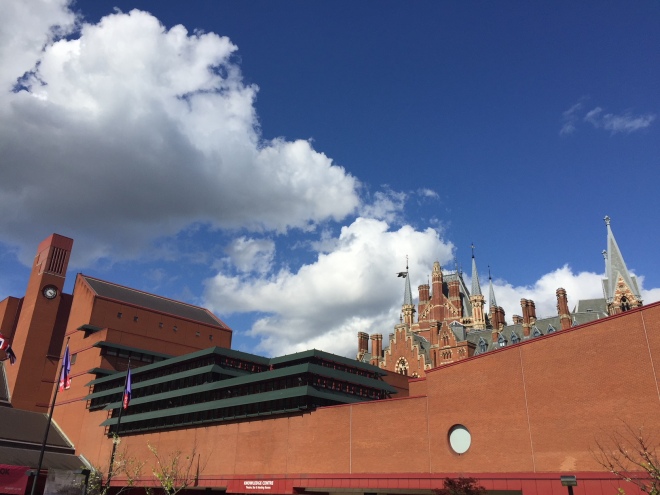
© Ginger Lee Thomason and foodandcheerandprose.com, 2017-2018. Unauthorized use and/or duplication of this material without express and written permission from this site’s author and/or owner is strictly prohibited. Excerpts and links may be used, provided that full and clear credit is given to Ginger Lee Thomason and foodandcheerandprose.com with appropriate and specific direction to the original content. Featured image by John Cummings found here. Image of Kate Young and Pen Vogler taken by Ginger Lee Thomason with an iPhone 8, 2018. Image of British Library and St Pancras taken by Ginger Lee Thomason with an iPhone 8, 2018.


Throughout my life it’s always come back to my family. I know I’m fortunate to have people in my life that love me because of my eccentricities, partially because they’re also responsible for this. I come from a very big, loud, and opinionated Mormon clan. My mom has four brothers and my dad has two sisters and two brothers.
I have lots of first cousins and there are five of us born within a three-year span of one another and we always hung around and chased each other throughout childhood. My Aunt Claudia has been a constant supporter of my dreams and as I grew into adulthood she became my feminist icon and basically my other mother.
Family is not without tears and trials though. Since we’re all so big and loud and opinionated there are a lot of butting heads on my dad’s side. I also had a falling out with my dad last summer that’s still slowly undergoing repairs. And me being three thousand miles away often has me aching for the presence of those that make me laugh and those that feed me good food.
This is seeping into my writing. As I continue to study food writing, reading books of late like Signe Johansen’s Solo and Bee Wilson’s First Bite, I am reminded how cooking is firmly rooted in family and groups for so many of us. Attending lectures at the British Library’s Food Season, it is the theme throughout all talks. Food is love and food is family. We’re food writers because we discovered this passion at the feet of our family members throughout our formative memories.
In How to Cook a Dragon, my work in progress for my PhD in Creative Writing, I have two characters who in their first chapters are on the outs with their families. One because they are a source of their anxiety disorder and the other because he has chosen love over the traditions of his people to only marry within their own magical race. Yes, it is probably an allegory for both interracial marriage and LGBTQ 20th century issues. I do not deny that is a large part of my outlook that churches should mind their own damn business about consensual pairings. (But that’s another blog post for another day and another novel that’s on the backburner.)
But family, I find I have to give my characters back their families as well. Most wounds heal with time. Good memories often win out over the bad. Few slights are so severe that they can’t be repaired with more good memories.
Even though both my parents worked, I have so many memories of the kitchen table. Of pot roasts with beef from my Grandpa Forbes’s farm and cobs of corn picked hours before slathered in butter. The summer get-togethers with my Grandma T’s brownies with their sweet penuche-like frosting and my Mom’s pasta salads have been peaking in my thoughts as summer descends on Cambridge.
The long winter is over; us sweet summer children are ready for the fruits of the sun. (Take that GRRM)
Michael Pollan asked in his last book, “For is there any practice less selfish, any labor less alienated, any time less wasted, than preparing something delicious and nourishing for people you love?”
Because of the distance I’ll write about food and family and love. And continue to share my memories and self-discoveries through food and cheer and prose.
© Ginger Lee Thomason and foodandcheerandprose.com, 2017-2018. Unauthorized use and/or duplication of this material without express and written permission from this site’s author and/or owner is strictly prohibited. Excerpts and links may be used, provided that full and clear credit is given to Ginger Lee Thomason and foodandcheerandprose.com with appropriate and specific direction to the original content.
Sometimes you need to take pride in the little things. I’ve been really struggling with my writing of late, lack of productivity and satisfaction with actual prose produced, and it’s been wearing me down. On Monday nights for the next three months, I’ll be sitting in on the novel writing class of Dr. Caron Freeborn, a writer and poet I’ve really come to respect and I certainly admire her zeal and passion for the craft.
In the first class, she inadvertently covered several things I’ve been stressed about regarding my PhD’s structure that has partially contributed to the writer’s block I think. We also did a short writing exercise, which I often love to do, even though most of the time I hate being put on the spot to write. Quite often it’s a weird way to get the elasticity of your creative muscles moving again. But when I buy those books of “1001 Writing Prompts” it feels like my brain is once again reduced to an empty cavern. I need to figure out a way to make it work solo for me.
For the exercise in class on the 5th of February, we were told to write down one or two lines or several characteristics and we put them in her hat and drew out one written by a fellow classmate. You can see the one I picked below:
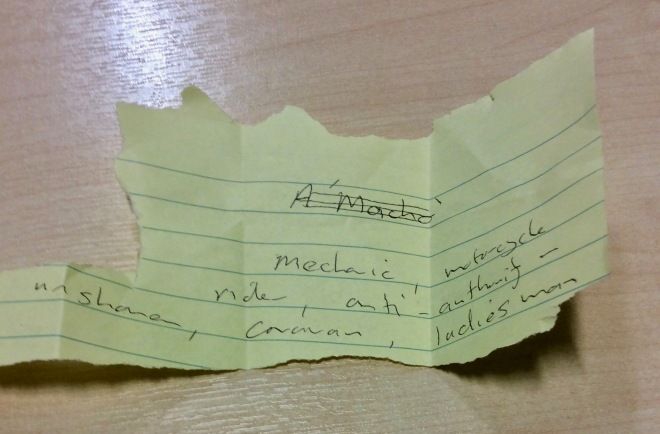
“Mechanic, motorcycle rider, anti-authority, show off, caveman, ladies’ man.” We were told to craft a monologue, inner or otherwise. We only wrote for about fifteen minutes and I easily banged out on my keyboard the following:
There’s something you should know about the highway, the sonbitch tends to go on, but the gas in your engine can burn out. The radiator needs coolant. And yeah it’s fuckin stupid to go around without headlights on the sonbitch. I saw a dumbass the other day cruisin’ along with the rear break lights out. Where was I goin’ with this? Oh yeah, highways are not women neither. You can have scruff, you don’t vote, you give cops the bird on your bike, and you don’t give a damn about the speed limit, but highways are like women, there’s always one willing to take you for a ride.
Still, there’s always the shop. Your lady’s at home is like the garage. You call out and the doors open. No matter how many highways you’ve been down. The pope says you should always go bareback, but godddammit man, remember to wear leather and rubber for chrissake. Keep the skin from gettin’ all red and pussed after a tumble.
As you can see it’s far from being great, and the character is quite a piece of work himself, but I keep telling myself that I need to practice #BoringSelfCare and positively celebrate when I achieve something. It’s 150-ish words of something that is creative and even unique. I mean a “Hell’s Angel” type (as one classmate called it when I read my piece aloud) who actually endorses wearing a condom? Maybe there’s some redemption for this nameless asshole and it’s a further notch for me on my writer’s journey.
P.S. When I wrote the piece I think I was trying to capture the essence of Adam Baldwin’s Jayne Cobb from Firefly, with obvious added transgressive attributes. Maybe given a bit more time I could have redeemed him somehow, but for now he goes out onto the Internet in all the rough edges of my #BoringSelfCare acknowledgement.
© Ginger Lee Thomason and foodandcheerandprose.com, 2017-2018. Unauthorized use and/or duplication of this material without express and written permission from this site’s author and/or owner is strictly prohibited. Excerpts and links may be used, provided that full and clear credit is given to Ginger Lee Thomason and foodandcheerandprose.com with appropriate and specific direction to the original content.
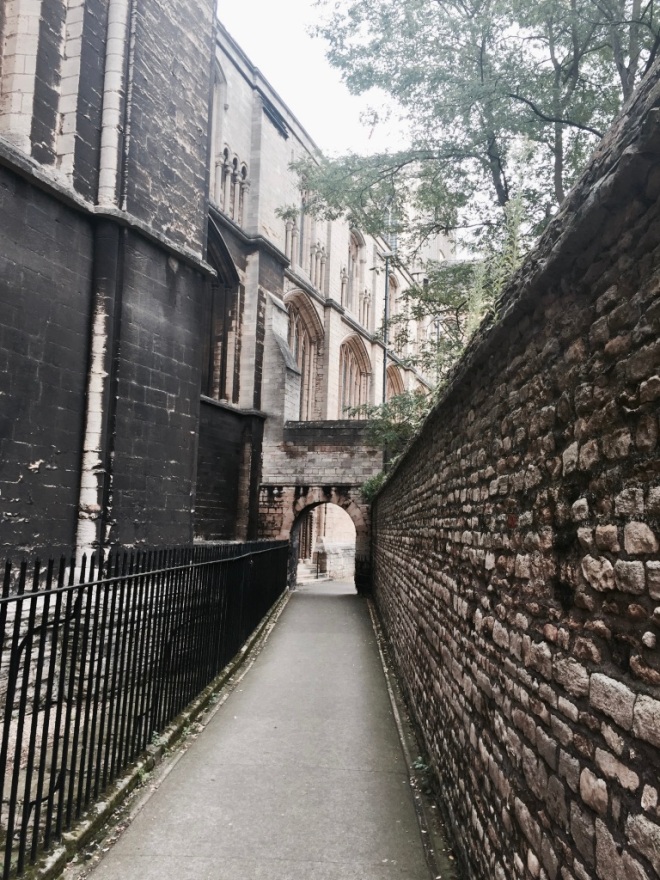
Less than a month left in this crazy year. Well, crazy doesn’t even cover a fraction of it. I started this list the last week of November 2017. Some things I added when I first drew up the list have already been completed. Some of you may call that cheating. I say that’s too bad. It’s my life, my brain, and my list (and besides it’s postmodern to mess around with chronology).
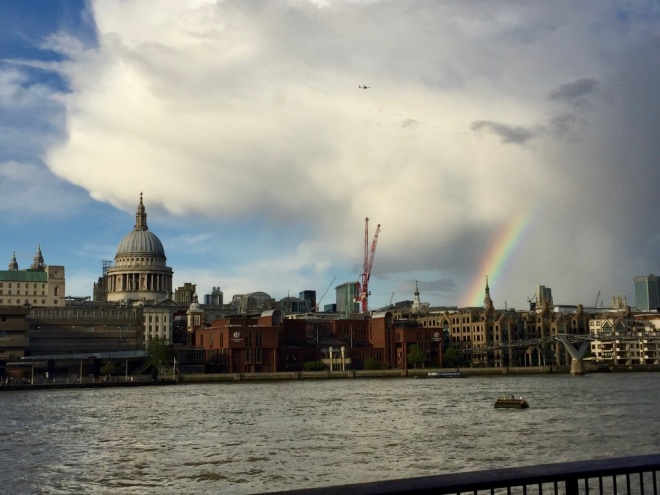
***
© Ginger Lee Thomason and foodcheerprose.wordpress.com, 2017. Unauthorized use and/or duplication of this material without express and written permission from this site’s author and/or owner is strictly prohibited. Excerpts and links may be used, provided that full and clear credit is given to Ginger Lee Thomason and foodcheerprose.wordpress.com with appropriate and specific direction to the original content. Featured image was taken in August of 2017 in Cambridge, UK with an iPhone 6. Image 1 was taken at Peterborough Cathedral in September of 2017 with an iPhone 6. Image three was taken in London in August of 2017 with an iPhone 6.
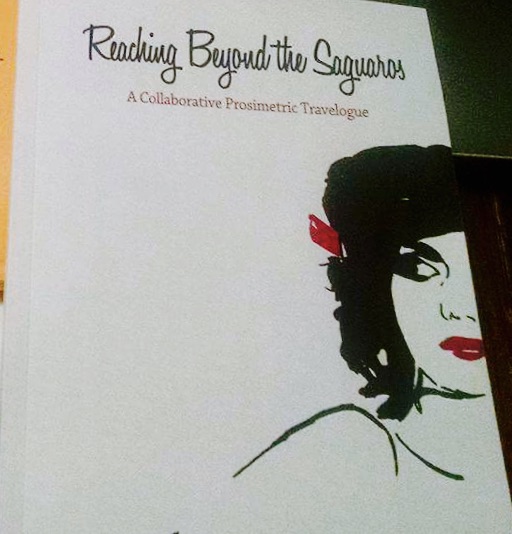
The above image is the contributor’s copy of a project pitched to me in the fall of 2016. The editor of Reaching Beyond the Saguaros (Serving House Books), Heather Lang, proposed a haibun project to our Fairleigh Dickinson MFA group. A haibun is a Japanese travelogue combining prose and poetry. I loved the sound of this idea, especially since for much of my MFA I felt disconnected from the community of my fellow students because I lived in Utah and most of them lived in New York and New Jersey. I had clicked with Heather because of this distance (she lives in Las Vegas) and because I admire her literary magazine Petite Hound Press.
When I took up my section of the project I had recently learned that I had been accepted to Anglia Ruskin University in Cambridge, England. This began a new path in my life that I had been working towards, and wanting to walk on, since my high school days. And soon after the reception of this news, my days in Utah became a series of “last time for a long time” moments. One of these was a trip out to West Wendover, Nevada with several family members.
I’ve never been much of a fan of the small gambling town. I have absolutely no luck and there’s not much to do besides drink, gamble, eat at mostly okay restaurants, and go see shows at the concert hall. That weekend during my cousin Brent’s birthday Penn and Teller would be performing their comedy and magic act. I had seen the duo before in Las Vegas with our cousin Dylan, who in turn has seen them live almost a dozen times. My grandma, her sister, and two of her daughters also joined us for the show. We all went out to dinner at an Italian place called Romanza. They happen to make amazing cocktails and this was the restaurant that started my love of Caesar salad.
However, before this night began, Dylan and I drove into Wendover together. We discussed the upcoming election, the Marvel shows on Netflix, and other topics. Because this was going to be my last time for a long time, I asked if we could pull over at a rest stop that over looks the Bonneville Salt Flats.
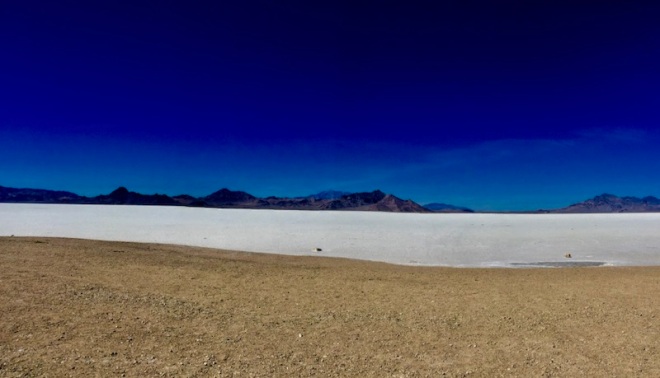
It looks like something out of a science fiction or fantasy novel. A blanket of gray-white salt left behind from when a great saline lake covered much of Utah towards the end of the last great ice age. Every kid in Utah learns about Lake Bonneville and we’re shown where the lake left geological imprints in the Wasatch Mountain rage. There were times when I would find myself looking at the mountains and visually tracing the lines of where the shores used to be.
There’s almost always wind whipping through the peaks of the Silver Island Mountain Rage along the northern edge of the Salt Flats. I can’t remember if this was the first time I noticed it, but that afternoon the wind blew salt onto my lips and when I licked them I tasted a unique sea. So different from the time I walked along the harbors of Long Beach, California. There was a distinct lack of fish, but supplemented with an earthy base note, almost as though the air were a salty, dry rain.
But when I returned home to write about northern Utah, Layton, and Salt Lake City for the haibun project I was smothered by writer’s block. Each word of the first couple of drafts of my part of the haibun was pulling out like teeth. It felt like an exercise in futility and seriously began to affect my self-confidence. I was unsure if my piece needed dialogue, but inspiration for some came from a conversation with my sister about my upcoming move. She reiterated how much she had missed the mountains of home while living in North Dakota, and warned me that I would soon feel their absence in England, in a place without them.
I rounded out my haibun with the constant memory of the mountains turning from spring green to summer brown every year and other recollections of what home was to me.
To my surprise Heather liked it. I passed it on to her to give to the next person in the travelogue chain and pretty much forgot about the project as I continued with my preparations for my PhD program and transatlantic move.
As the days continued to countdown to the day I would leave, I pulled my part of the haibun out of one of my iCloud files to read at my going away party. I’d never lived further than 40 miles from the city I was born and raised in, and since I spent the last half of 2016 preparing to move to England it seemed like a fitting piece to read aloud. I’ve always been very shy about sharing my reading in front of my family. A lot of my works tend to use colorful language and situations I dare not speak of in front of my grandmothers, but the haibun was my ode to the home I would be leaving behind.
There’s nothing like making people feel something when they read your work. One of the few times I’ve gone to an open mice night and actually got up to read, a woman handed me a note saying that she had been touched by my poems. That night in front of my family I began with Walt Whitman’s O Me! O Life!, a poem that I rediscovered at the beginning of my MFA program and one that basically set the internal tone for what I wanted to achieve with that degree. (Here is a short clip of Robin Williams reading part of this amazing poem from the movie Dead Poets Society.)
Then I read a short poem titled The Place (Without) (unpublished) inspired by Harold Pinter in an afternoon workshop I took from Renee Ashley. A prose poem titled Here to Live Out Loud (unpublished) and a free verse piece called Are You Alive from Planet Earth? (Here and There) (unpublished) inspired by two of my dearest friends, James and Jennifer.
I was in a rhythm as I performed and so when I got to “Layton, Utah,” my piece of the haibun. To avoid breaking any of that momentum, I kept my eyes focused on the pages in my hands. After I finished my ode to my home I looked up and saw that, the people I love and adore most in the word were all speechless and several had been moved to tears.
It was the best gift I could have ever received before beginning my PhD journey.
____
____
Being from Northern Utah: On a quick drive westward from
Utah’s capitol, through beige desert ranges, we stopped at the Bonneville
Salt Flats on the way to a little gambling town. (Possibly for my
last time in a long time.) When the wind picked up, we could taste a
desert sea blowing through the peaks, and almost see where the earth
curves amongst rippling refractions off asphalt and salt. Images to imprint.
The Wasatch, Uintah, and Oquirrh surrounding Home have just
been my whole life. Always to the east. Their millions of years of
memory seen through my infinitesimal birthdays.
“You’ll miss the mountains,” my sister said. “Their absence is an
ache.”
Summer weekends up the Ogden, Farmington, Little, and Big Cottonwood
Canyons to find the evergreen amongst golden brush turned
into tinderboxes. To visit an old saloon, where they put brats on top of
hamburgers and see where people have stapled signed dollar bills to the
walls and ceiling. And there are initials everywhere of lovers, families,
and friends. You can find my graffiti at the Shooting Star in the ladies
room.
I’ll miss memories the most.
© Ginger Lee Thomason and foodcheerprose.wordpress.com, 2017. “Layton, Utah” was first published in “Reaching Beyond the Saguaros” Serving House Books, 2017. Unauthorized use and/or duplication of this material without express and written permission from this site’s author and/or owner is strictly prohibited. Excerpts and links may be used, provided that full and clear credit is given to Ginger Lee Thomason and foodcheerprose.wordpress.com with appropriate and specific direction to the original content. Image 1 was taken with a Samsung phone by Tami Forbes in May 2017. Images 2 and 3 were taken with an iPhone 6 at the Bonneville Salt Flats in September 2016.
“Art enables us to find ourselves and lose ourselves at the same time.” —Thomas Merton
There’s a stupid food lore that if you throw cooked spaghetti at the wall and if it’s stick it’s done. This is stupid for several reasons of course. Why waste pasta? And why clean up more messes after cooking than you need to? We all know the pot of marinara is going to spit up a hot bubble of tomato-y burp at one point and get little driblets of sauce all over your stovetop. Besides, I highly doubt anyone in this day and age would do anything that dumb, then again we have people believing that they can recreate Minion cookies off Pintrest that come out looking like something else entirely.
My apologies for the tone of the last paragraph. It was written in frustration at a Starbucks in Cambridge after spending over an hour staring at a blank screen. That is of course a lie, I spent most of the hour I should have been writing surfing the Internet. At least 25% of the time was spent “researching” for the short story I’m trying to finish right now. It’s hard to write about what you know, but obviously don’t know as much as the real people in our stories.
This can be frustrating if your character is say an impulsive fighter, from an ancient order and she nearly gets herself killed by rushing into a situation before thinking everything through. You know she should know better, but obviously you have to craft circumstances that circumvent logic and almost twenty years of training. What about a chef frustrated with her profession, even though she is at the top of her career as the story begins? How does one write about crafting the perfect menu that tells a magical, mental narrative if you’ve never been through the rigors of culinary school, let alone years of training and months of recipe testing? How can I make my readers think something like “fresh ricotta, olive oil drizzle, rosemary salt and candied orange zest on crispy olive ‘panettone’” is delicious and well thought out even though it has probably never existed in a restaurant outside the digital pages on Microsoft Word in my iCloud drive?
This is of course the whole purpose of writing—to make a reader experience what you have and to foster this unique osmosis of imagery. This is what I am studying and am trying to quantify for my PhD. All writers eventually figure out what works for them and how they convey this to their readers. Of course when this flow of information seems obstructed, aka writer’s block, this generates the opposite feeling of osmosis. It’s as if the fusion of words is burned up and suddenly our keyboards become dying stars. Except we don’t want a supernova to happen, even though this seems at first like a good idea. (Supernovas eventually become black holes.)
Recently, someone asked me what my writer’s block “looks like.” An interesting question, and one that will likely make every writer pause before they say “a block of course.” This physical manifestation of a literal translation between metaphor and imagery is pervasive. There are even gag gifts for writers of wooden cubes labeled as such. I’ve even seen a thick notebook designed to look like this.
For me, my writer’s block looks like a giant cube of sandstone. This is probably because I am a huge fan of the TV show Futurama. In the episode “A Pharaoh to Remember” the Planet Express delivery crew has to deliver a block of sandstone to a planet resembling Ancient Egypt. When Professor Farnsworth makes this announcement with his usual call of “good news, everyone,” we don’t see it until the camera pans out to show this object being larger than the spaceship that will deliver it, and Fry comments, “I thought something looked different in here.”
Over the past six months since I’ve arrived in the UK, I know I’ve been so focused on pushing this block out of it’s tunnel, that I have forgotten one of the most basic principles of the physics of the mind. We can imagine almost anything if given the linguistic keys to do so. When this person asked me the follow up question of “why can’t I move this block?” my immediate reaction was, “well, maybe I should just pan the camera out?” Instead of moving or chipping away at the gargantuan artifice built up of procrastination and bad habits, I can focus on expanding the cavern it’s stuck in.
So take this advice, even if I don’t as often as I should. Don’t focus on moving, blasting, or chipping away at the obstacle. Maybe instead focus on expanding the cavern around it. Either by panning out, exploding new holes to let the light in, or finding cracks you didn’t realize that were there. This mental exercise can be strengthened with a few other proven tricks of mine, and if they work for me and my screwy brain, they might work for you:
“Life is what happens when you’re making other plans,” as John Lennon said but one must make writing part of life, not a plan.
Advice I have been given over and over. Things I know, but often forget to practice. Perhaps we always need re-reminding of the important things as a way to remember to appreciate them.
“If a man is to live, he must be all alive, body, soul, mind, heart, spirit.” —Thomas Merton
© Ginger Lee Thomason and foodcheerprose.wordpress.com, 2017. Unauthorized use and/or duplication of this material without express and written permission from this site’s author and/or owner is strictly prohibited. Excerpts and links may be used, provided that full and clear credit is given to Ginger Lee Thomason and foodcheerprose.wordpress.com with appropriate and specific direction to the original content. Image taken with iPhone 6 in July 2017 at Museum of London, London, England, UK.
It’s been a hell of a year.
Just over one year ago, in early June of 2016, I decided to see if the idea that started to take shape during my MFA program would be worthy enough to make a decent PhD thesis. I drew up an Excel spreadsheet of PhD in Creative Writing programs in the UK that could take FAFSA student loans and narrowed them down based on other additional factors. Those included tuition, cost of living, and the coolness factor of where the school was located. Then I started reaching out to the schools to find an advisor that could supervise my science fiction and fantasy genre.
At the time I was pitched my PhD topic to focus on the food imagery in the works of Margaret Atwood and Neil Gaiman. A few times I got the response of “I’m sure we could find a supervisor for you.” Although the most common reply I received was, “I don’t think anyone here could supervise a degree that focuses on speculative fiction.” Or is silence better than kindness? There were a few silences too. I’m sure I could have been more aggressive but this was more or less an exercise in seeing what could happen. I had no idea if I could even go beyond asking. I still had to save up money, apply for a visa, and mentally prepare myself to leave home for at least three years.
On May 10, 2016, I received a response from the person who would become my second supervisor, Dr. Helen Marshall. Not only did she give full replies to some of my more awkward questions (I actually asked if British English grammar and punctuation would be expected of an American student), but she was wholly enthusiastic about my idea.
“Your project interests me because I find food to be such a strong component of speculative fiction, both, as you say, as a thematic device and as an avenue for world-building. All sorts of tropes come to mind, particularly taboos around eating food (such as in Fairyland for example) and in works that have a strong connection to those mythologies (Neil Gaiman, Charles de Lint, etc.) Anglia Ruskin could well be a good fit for your project as we have a real faculty strength in science fiction and fantasy, one that we expect to grow over the next three years.”
What? Seriously? I spent my whole MFA feeling like a bump on a log because I couldn’t fit myself into the literary fiction mold I tried so hard to fit myself into. But I was fortunate to find an enthusiastic mentor in Ellen Akins, she not only liked my straight fantasy ideas she encouraged them. When I told her I wasn’t sure about continuing on my with my Daeramere stories she asked in her wide eyed, straightforward manner, “why not?” (I try to take every opportunity I can to thank her for permission to write fantasy. Thank you, Ellen!)
There were several weeks of back and forth with Helen and then she introduced me to Dr. Tiffani Angus. Tiffani was also enthusiastic about my idea, except that both of them believed that I was “shoe-horning” the works of Atwood and Gaiman into my thesis idea. So I started to branch away, and was thrilled because I was once again given permission to explore the genre that has been my constant creative friend since I was a child.
When I arrived in the UK the time came for me to draft my real proposal, with a due date of the end of February. I must say the due date itself didn’t intimidate me at first. I figured I knew what I was doing, I knew this genre, of course I could get out in words what the (beep) I was going to become a self-professed expert in.
The truth is always harder and heavier than that isn’t it.
Like thousands of other postgraduate students (probably like every postgraduate student), I was immediately stricken with that most contagious of thought viruses: imposter syndrome. Other students were talking about doing their PhD’s on transformative works (aka fanfiction) and Tiffani told me that her PhD focused on chronotopes and heterotopias and spatialization…I felt like my terminology was so pedestrian for such lofty ivory tower ambitions.
Almost a year to the day after my first correspondence from Helen, I was told that my PhD proposal had been approved by the university. That I was worthy of literature.
I know when I say to a layperson, or even another student of creative writing and literature, that I’m studying the use of food imagery in science fiction and fantasy, particularly, how it shapes world-building and characterization, they usually reply that sounds really cool. Or variants thereof. The working title of my academic thesis eventually revealed itself as “Food and Cheer and Prose: The Gastronomy of Science Fiction and Fantasy.” Yet, when another creative writing or lit postgrad says something like, “my thesis is on the transmutability and false memory in the prose of Proust and Woolf,” I feel like I come up short. (I completely made that up but you get my point right?)
Those of you who know me well know that this is a huge part of my being, I always feel like I come up short when faced with the ambitions of others. But apparently ambition is something that is both singular and communal. Homer wasn’t the first person to tell stories about a ten-year war started by a beauty contest among the gods, but did so with his own twists because he wanted to tell this grand tale in a new way. Civilization repeated it over and over because it’s a good story and quite often tells us something about ourselves in how we retell the tale.
I guess this means I’ve got to remember that while others may talk of analyzing trauma and literary transubstantiation within the works of J.R.R. Tolkien and George R.R. Martin (again made up) that this is their part of the Trojan War of literature that they see. I see food and maybe when I tell you of a recipe hidden within prose it will either stir your stomach, or your mind, and then you’ll go and repeat the tales of brave Ulysses in your own way.
That is literature.
And this is my proposal:
Food and Cheer and Prose: The Gastronomy of Science Fiction and Fantasy
Proposed Area of Research
This doctoral thesis will be comprised of a creative piece of approximately 60,000 words and a critical analysis of approximately 25,000 words.
For a successful connection between reader and science fiction and fantasy literature the writer must evoke a convincing cultural milieu. My creative project, a speculative fiction short story collection, will explore food as a nexus of culture within literature. Each story will be paired with a recipe and will fall into one of the subgenres of science fiction and fantasy (SFF). The accompanying research will focus on how food imagery influences SFF world building, and how setting and characterization are shaped by different dichotomies found within the genre.
Aim of the Study
My proposed creative project, Odyssey in the Starwine Market: A Collection, will pair eight recipes with eight SFF works in a combined tasting and reading menu. Some recipes readers will be able to recreate for themselves, some perhaps not. The short stories will also fall under different subgenres, including high, urban, weird, and historical fantasy.
Aside from the subgenre of culinary mysteries, pairing recipes with prose is an uncommon occurrence in fiction. Although this medium has also appeared in nonfiction memoirs, Laura Esquivel’s magical realism novel, Like Water for Chocolate, in which a recipe precedes each monthly chapter, is one of the few examples where a whole menu is paired with the prose of the story.
Rosemary Jackson argues that fantasy is a “literature of desire, which seeks that which is experienced as absence or loss” (1981, pp.3-4). Food creates a connection between reader and story because it tends to literalize this desire in a variety of ways. Reading about Sansa Stark saving room for lemon cakes in A Game of Thrones, or Shadow Moon reflecting on his departed wife’s chili in American Gods, triggers Proustian moments in a reader.
One of my proposed stories, “How to Cook a Dragon,” will feature a typical post-Tolkien fantasy world. A cooking competition will serve as the catalyst to an unfolding mystery of sabotage and political intrigue between classic fantasy races. The story will also serve as a tongue-in-cheek observation of overused tropes of the genre (as examined in Diana Wynne Jones’s The Tough Guide to Fantasyland) and the popularity of television cooking shows.
Research Questions
Context for the Research
This PhD project addresses relatively new ground in academia. Fabio Parasecoli claims “food has only recently become a respectful object of interest and research in academia” (2008, p.11). I will investigate food imagery in SFF to see how it has changed over the years and how it has shaped the genre.
My research component will combine two of the oldest pieces of civilization: literature and food. Food in myth is about desire, as illustrated by the fruit of knowledge in the Garden of Eden, the Trojan War starting with a contest over a Golden Apple, and the apple that appears in the Grimm Brothers’ Snow White tale. In stories about fairies all readers know “Fairies often ask for food or gifts,” and “one must not eat the fairy food” (Purkiss, pp.66 & 129). Because of the myth and fairy tale origins of SFF there is an underlying tradition of food imagery. To taste what a character is eating or cooking enforces world building, shapes the setting, and feeds into characterization. Tolkien’s The Hobbit normalizes Middle Earth and the hobbit, wizard, and dwarf races via a feast featuring a very British menu. In contrast, Daenerys Targaryen in Martin’s A Game of Thrones is served horsemeat at her wedding feast. During his first journey on the Hogwarts express, Harry Potter walks away from the food trolley with an armful of fantastic sweets, including chocolate frogs that actually hop around.
There is also another side to food imagery, where an author takes these vicarious pleasures and subverts them. In addition to his unusual speech patterns, Gollum is further alienated from Sam, Frodo, and the reader by his bloodthirsty diet. Authors may ask of readers to view a tray bearing breakfast as something nefarious. After chaining up and stripping the wizard protagonist Harry Dresden of his magic in Death Masks, the villain Nicodemus taunts Harry with food, asking both the protagonist and the reader to sell their soul for pancakes and coffee.
Methodology
My research will include SFF short stories and novels, as well as cookbooks and food history texts. Food imagery, via the lens of literary theory, will be examined through the works of SFF academics such as Farah Mendlesohn and Edward James. Works about creative writing and the craft of writing will also be studied. Visits to historical kitchens, food libraries, and London’s Le Cordon Bleu will reinforce the living history of food and its ever-changing presence in our lives and in literature.
As my academic research progresses I will attend, and submit a paper to, the Oxford Symposium on Food and Cookery and SFF conventions, including NineWorlds, Eastercon, and WorldCon. Updates on my academic and creative process will be featured on www.foodcheerprose.wordpress.com.
Bibliography
Comparative Texts
Butcher, J., 2003. Death masks. New York: Roc.
Collins, S., 2008. The Hunger Games. New York: Scholastic Press.
Esquivel, L., 1992. Like water for chocolate: a novel in monthly installments, with recipes, romances, and home remedies. New York: Doubleday.
Gaiman, N., 2004. American gods: a novel. Readers’ copy edn. Ossining, NY: Hill House, Publishers.
Gaiman, N., 2009. Neverwhere: the author’s preferred text. New York: William Morrow.
Lewis, C.S., 2005; 1950. The lion, the witch, and the wardrobe. New York: HarperCollins Publishers.
Mirrelees, H., 1926, Lud-in-the-Mist, Glasgow, UK: Collins.
Rowling, J.K., 1998. Harry Potter and the sorcerer’s stone. New York: Scholastic.
Tolkien, J.R.R., 1997. The hobbit, or, There and back again. Boston: Houghton Mifflin Co.
Tolkien, J.R.R., 1986; 1965. The two towers: being the second part of the lord of the rings. Boston: Houghton Mifflin Co.
Tolkien, J.R.R., 2012; 1994. The fellowship of the ring: being the first part of the lord of the rings. Boston: Mariner Books/Houghton Mifflin Harcourt.
Creative Process/Craft
Burroway, J., Stuckey-French, E. and Stuckey-French, N., 2015; 2015. Writing fiction: a guide to narrative craft. Ninth edn. Boston: Pearson.
Card, O.S., 2010. Characters & viewpoint. Rev edn. Cincinnati, Ohio: Writer’s Digest Books.
King, S., 2000. On writing: a memoir of the craft. New York: Scribner.
Lamott, A., 1995; 1994. Bird by bird: some instructions on writing and life. Anchor Books edn. New York: Anchor Books.
Mort, G., 2001. The Creative Writing Coursebook: forty authors share advice and exercises for poetry and prose. London: Macmillan.
Food Studies
Andrews, T., 2000. Nectar & ambrosia: an encyclopedia of food in world mythology. Santa Barbara, Calif.: Abc-Clio.
Dahl, R. and blake, Q., 1994. Roald Dahl’s revolting recipes. New York: Viking.
Davidson, A., Jaine, T. and Vannithone, S., 2014. The Oxford companion to food. New York, NY: Oxford University Press.
Freedman, P., 2007. Food: the history of taste. Berkeley: University of California Press.
Lawson, N., 1998. How to eat: the pleasures and principles of good food. London: Chatto & Windus.
Monroe-Cassel, C. and Lehrer, S., 2012. A feast of ice and fire: the official companion cookbook. New York: Bantam Books.
Parasecoli, F., 2008. Bite me: food in popular culture. Oxford; New York: Berg.
Pollan, M., 2006. The omnivore’s dilemma: a natural history of four meals. New York: Penguin Press.
Pollan, M., 2013. Cooked: a natural history of transformation. New York: The Penguin Press.
Reeder, C., 2015. The Geeky Chef cookbook: unofficial recipes from Doctor Who, Game of thrones, Harry Potter, and more: real-life recipes for your favorite fantasy foods. New York: Race Point Publishing, a division of Quarto Publishing Group USA Inc.
SFF Studies
Card, O.S., 1990. How to write science fiction and fantasy. Cincinnati, Ohio: Writer’s Digest Books.
Clute, J. and Grant, J., 1997. The Encyclopedia of fantasy. US edn. New York: St. Martin’s Press.
Jackson, R., 1981. Fantasy, the literature of subversion. London; New York: Methuen.
James, E. and Mendlesohn, F., 2003. The Cambridge companion to science fiction. Cambridge; New York: Cambridge University Press.
James, E. and Mendlesohn, F., 2012. The Cambridge companion to fantasy literature. Cambridge; New York: Cambridge University Press.
Jones, D. W., 1996. The Tough Guide to Fantasyland. New York: Firebird Books.
Mendlesohn, F., 2008. Rhetorics of fantasy. Middletown, Conn.: Wesleyan University Press.
Purkiss, D., 2007. Fairies and fairy stories: a history. Stroud, Gloucestershire: Tempus Publishing Limited.
VanderMeer, J., 2013. Wonderbook: an illustrated guide to creating imaginative fiction. New York: Abrams Image.
© Ginger Lee Thomason and foodcheerprose.wordpress.com, 2017. Unauthorized use and/or duplication of this material without express and written permission from this site’s author and/or owner is strictly prohibited. Excerpts and links may be used, provided that full and clear credit is given to Ginger Lee Thomason and foodcheerprose.wordpress.com with appropriate and specific direction to the original content. Image taken with iPhone 6 in June 2017 at Foyles Bookshop, London, England, UK.